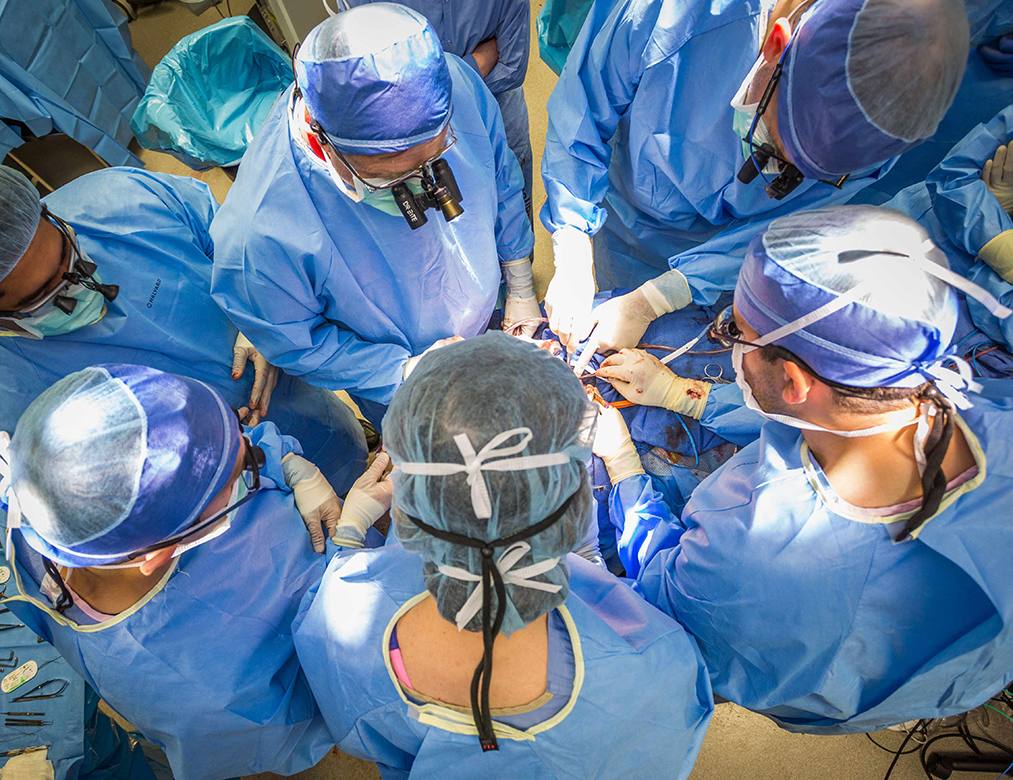 February 20, 2020By; Heather Carlson Kehren
February 20, 2020By; Heather Carlson Kehren
ROCHESTER, Minn. — A Mayo Clinic transplant team recently performed the 20,000th transplant at Mayo Clinic in Rochester. This major milestone comes as researchers study the potential for regenerative medicine approaches to dramatically transform how transplants are performed in the future. Regenerative medicine aims to shift the focus from treating disease to tapping the body’s ability to heal diseased cells, tissues and organs. Mayo Clinic’s transplant history began in 1963, when surgeons performed the clinic’s first living donor kidney transplant. That same year, transplant teams completed Mayo Clinic’s first bone marrow transplant.
Since those early days, Mayo Clinic’s transplant programs have expanded from kidney and bone marrow to face, hand, heart, liver, lung, pancreas and pediatric transplant programs. This year also marks the 20th anniversary of Mayo Clinic’s William J. von Liebig Center for Transplantation and Clinical Regeneration in Rochester.
“Mayo Clinic would never have been able to achieve this incredible milestone had it not been for the heroic decisions of donors and their families to give these lifesaving gifts,” says J.P. Scott, M.D., the transplant center’s interim director. “We are grateful for the trust that transplant recipients and donors have placed in us, and proud of our caring transplant center staff who always put the needs of our patients first.”
Mayo Clinic in Rochester has performed 8,808 bone marrow transplants, 6,297 kidney transplants, 3,198 liver transplants, 714 heart transplants, 538 pancreas transplants, 441 lung transplants, three islet cell transplants and one face transplant.
Researchers are also studying how to use the latest technology and recent medical discoveries to transform how transplants will be performed in the future.
Dennis Wigle, M.D., Ph.D., a Mayo Clinic thoracic surgeon and researcher, sees regenerative medicine as key to the future of transplant. New therapies could allow for damaged or diseased organs to be repaired so they could be used for transplant. These breakthroughs also could help make sure transplanted organs remain healthy, preventing rejection or the need for a second transplant. Dr. Wigle’s research is focused on the potential for using a person’s own stem cells to build an artificial or new lung.
“What was really science fiction four or five years ago has become a potential clinical reality,” Wigle says. “Obviously it’s a technology that is not going to be ready tomorrow or next week, or even next year, but there’s a lot of groups that have made a ton of advances, including ours, in trying to work toward that goal as a reality.”
Until that future day arrives, the need for organ and bone marrow donors remains critical.
Living donors can donate a kidney or a portion of their liver. Deceased donors can donate up to eight organs, corneas and other types of tissues. More than 112,000 people are on the waiting list for a lifesaving organ, according to the United Network for Organ Sharing. To register to become an organ donor, go to Donate Life America’s website. To be a bone marrow donor, join the Be The Match registry.
About Mayo Clinic- Mayo Clinic is a nonprofit organization committed to innovation in clinical practice, education and research, and providing compassion, expertise and answers to everyone who needs healing. Visit the Mayo Clinic News Network for additional Mayo Clinic news and An Inside Look at Mayo Clinic for more information about Mayo.
Media contact: •Heather Carlson Kehren, Mayo Clinic Public Affairs, 507-284-5005, [email protected]
